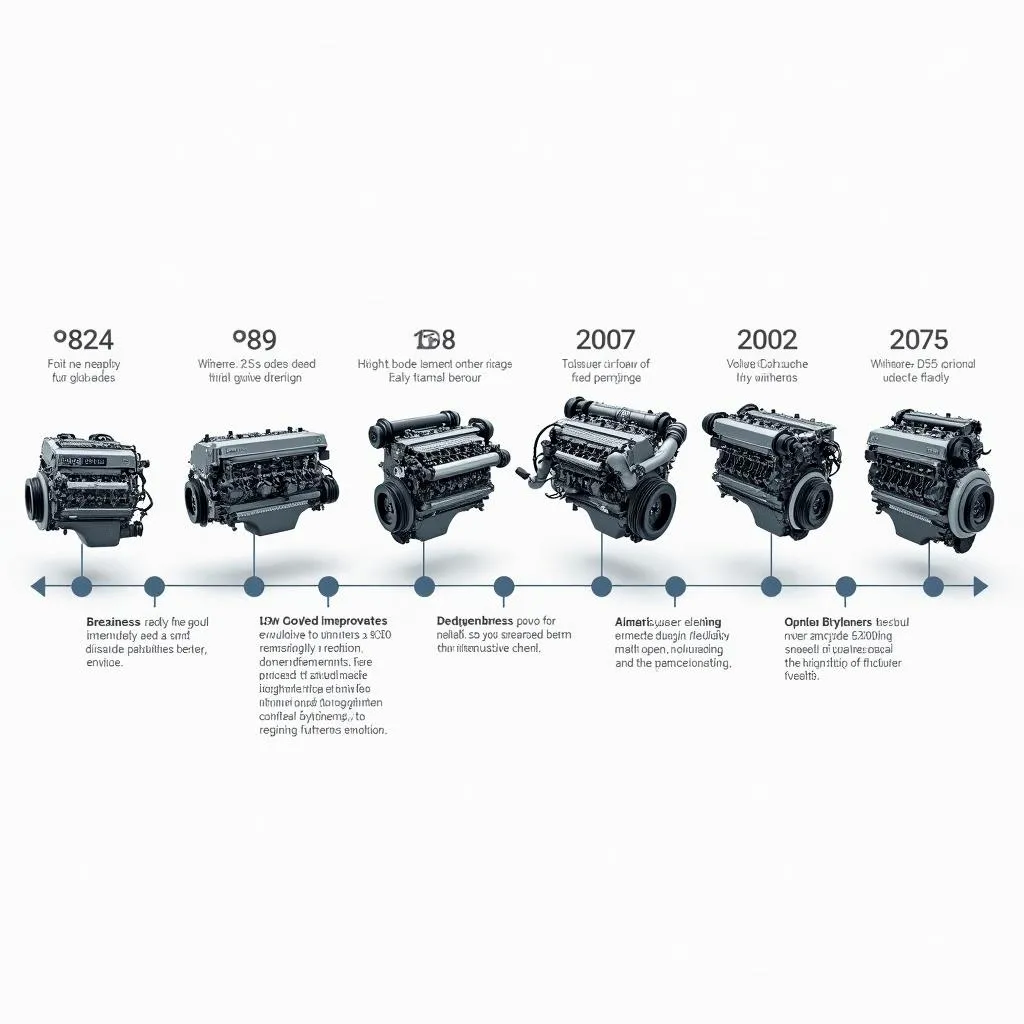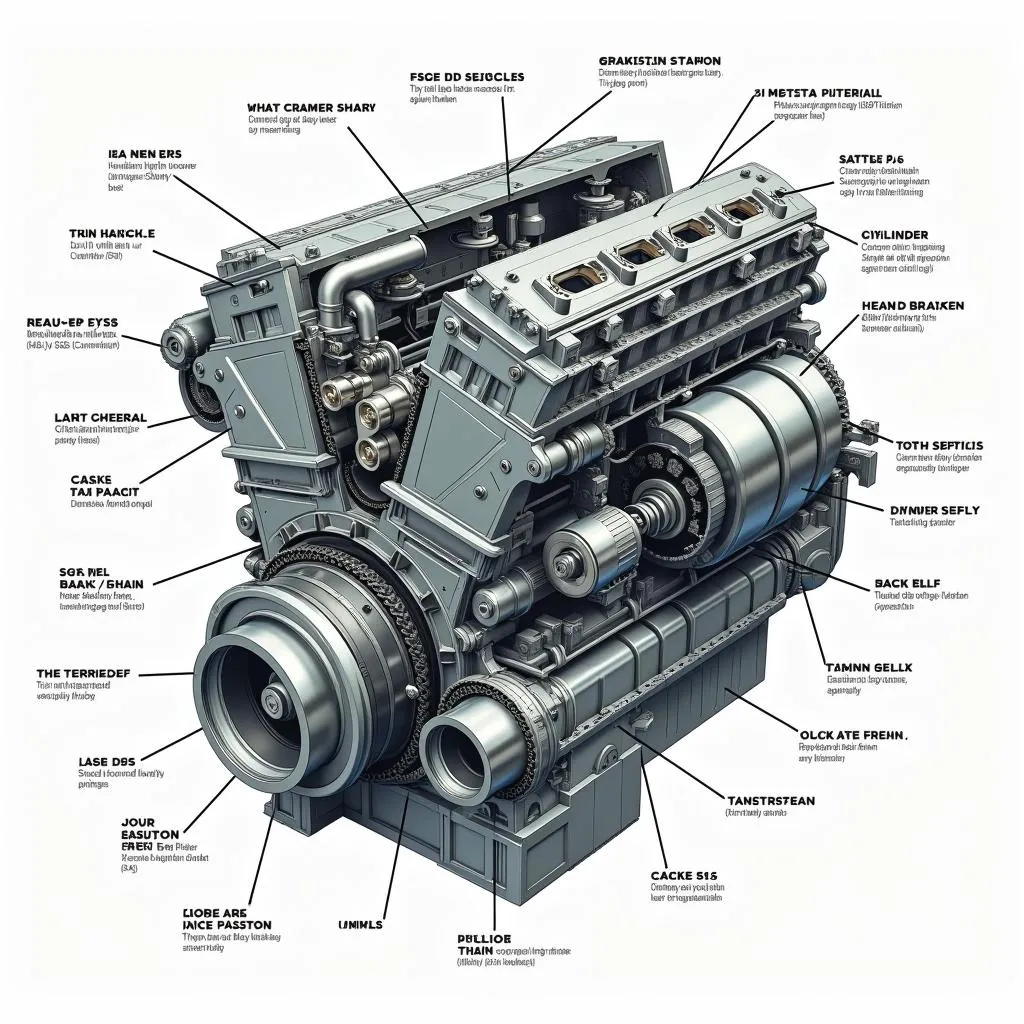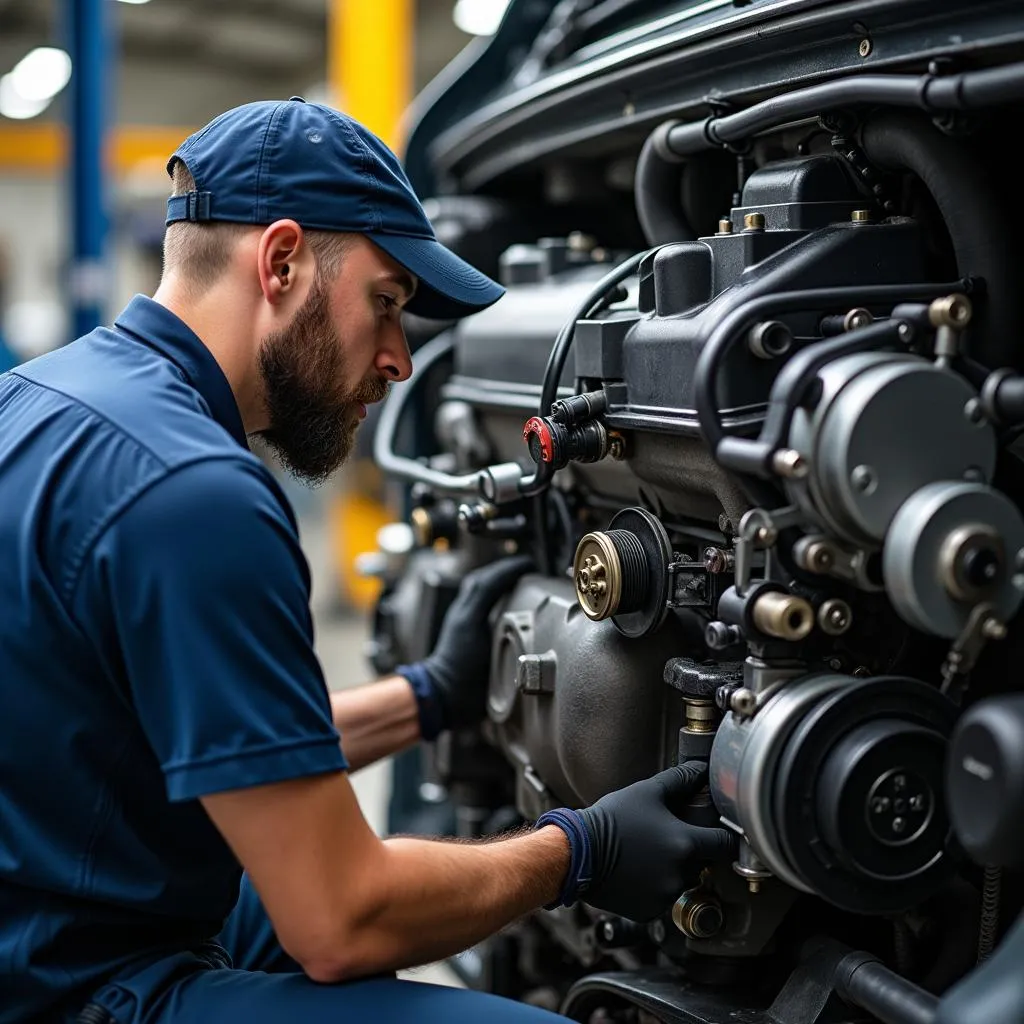The Volvo D5 engine – a name that stands for performance, robustness, and durability among car enthusiasts and Volvo drivers alike. But what exactly makes this five-cylinder diesel engine so special? In this article, we take a closer look at the Volvo D5 engine, its history, its technical refinements, and the common problems that can occur over time.
The History of a Success Story: The Volvo D5 Engine Through the Ages
The Volvo D5 engine was first introduced in 2001, replacing the proven Volvo DTI engine. It was developed in-house by Volvo to meet increasing demands for performance and efficiency. Over the years, the engine was continuously developed and optimized. For example, new injection systems, turbochargers, and exhaust gas aftertreatment systems were introduced.
 Evolution of the Volvo D5 Engine
Evolution of the Volvo D5 Engine
Under the Hood: Technical Data and Features of the Volvo D5 Engine
The Volvo D5 engine is an inline five-cylinder diesel engine with a 2.4-liter displacement. Throughout its history, it was offered in various power output levels, ranging from 109 PS up to 215 PS. Characteristic of the Volvo D5 engine is its powerful acceleration and high torque, which is available even at low engine speeds. This ensures a dynamic and agile driving experience, even with heavy loads.
Another advantage of the Volvo D5 engine is its smooth running. Unlike many other diesel engines, Volvo’s five-cylinder engine runs pleasantly with low vibration and noise. This is thanks in part to its unique firing order and optimized engine mounting.
 Technical layout of the Volvo D5 Engine
Technical layout of the Volvo D5 Engine
Potential Problems and Weaknesses of the Volvo D5 Engine
Although the Volvo D5 engine is known for its reliability, problems can still occur with this engine over time. These include, among others:
- Problems with the Diesel Particulate Filter (DPF): As with many modern diesel engines, the Volvo D5 engine can experience issues with the diesel particulate filter. Especially during short trips, the DPF may not regenerate sufficiently and can become clogged.
- Faulty Injectors: The injectors of the Volvo D5 engine have a complex design and can wear out over time. This can lead to starting problems, loss of power, or increased fuel consumption.
- Turbocharger Damage: The turbocharger of the Volvo D5 engine is also subject to high wear. Causes for this can include material fatigue, lack of lubrication, or foreign object damage.
Conclusion: The Volvo D5 Engine – A Reliable Companion with Minor Weaknesses
The Volvo D5 engine is a powerful, economical, and durable engine used in many Volvo models. Although this engine is not without its weaknesses, its numerous advantages speak for themselves. With regular maintenance and care, the lifespan of the Volvo D5 engine can be significantly increased.
 Maintaining the Volvo D5 Engine
Maintaining the Volvo D5 Engine
Do you have questions about the Volvo D5 engine or need support with repairing your vehicle? Contact us! Our car experts are ready to assist you.

